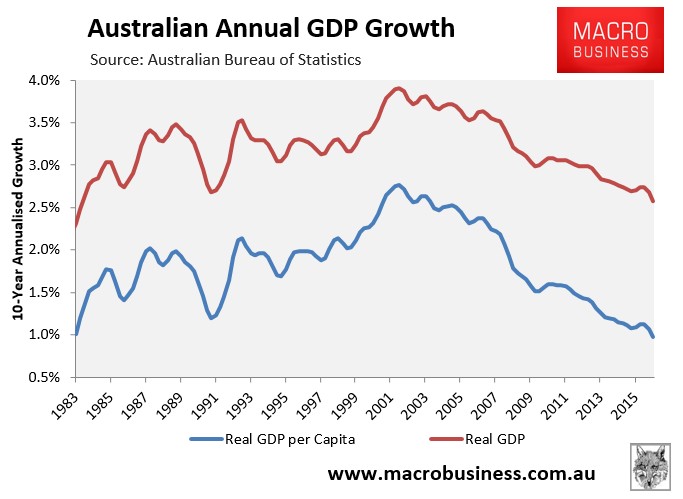Treasurer Scott Morrison is on the hustings today beginning to frame the May Budget:
…Acknowledging that families had been doing it “tough” and arguing that flat wages growth had seen greater demand on essential public services, Mr Morrison signalled there would be spending on schools, hospitals and Medicare in the budget, which could include an end to the Medicare rebate freeze.
“At a time when wages growth is admittedly and, regrettably, flat, I think Australians, particularly hard-working Australians on middle incomes, rely more and more and depend more and more upon these services,” he said.
“Hard-working Australian families rely on these services and I think an important message for the government is to ensure that we give them that confidence about that, that they can rely on those services, and they can rely on them under a Coalition government. And so the budget does need to signal, I think … that people can feel confident about the support for those services.”
Flagging that “growth is the goal” of his second budget, Mr Morrison also indicated he wanted to see the living standards of Australians lifted, and said the government would do more to help people struggling to buy a home.
“The growth story must remain the focus of the budget, because it is growth that actually not only improves the budget but it is growth that’s going to lift wages; it is growth that is going to lift business expansion; it’s growth that will continue to drive the improvement in living standards. So the growth is central to everything.”
With the housing affordability package set to be a centrepiece of the budget, Mr Morrison indicated the government wanted to boost supply and left open making changes to the tax system to reduce pressure on house prices.
“Now, I am as much concerned about someone on a low income, struggling with their rent as I am with someone who I know wants to get into home ownership for themselves,” he said.
“There’s a focus (in the budget) on housing affordability that is looking at everything from homelessness and social housing.”
Let’s let Adam Creighton set the Treasurer straight today:
Australia’s so-called growth miracle isn’t very miraculous. It’s built on a sustained influx of people.
News the economy grew 2.4 per cent in 2016 prompted another bout of backslapping. “Australia is growing faster than every G7 economy. Our growth continues to be above the OECD average and confirms the successful change that is occurring in our economy,” Treasurer Scott Morrison gushed last week.
Actually, it confirms our population continues to grow strongly. Indeed in 2014, the latest year of comparable data, Australia’s population grew faster than that of the 33 other OECD countries, except Israel and tiny Luxembourg.
Obviously, more people means more buying and selling of goods and services. Australia’s population growth has averaged more than 1.6 per cent a year for a decade, or between 300,000 and 460,000 people a year, about half of which is due to immigration.
GDP per person is surely a more relevant criterion for how we’re travelling economically. And far from 25 years of unbroken economic growth, on that measure Australia has had recessions in 2000, 2006, and late 2008. Indeed, Japan, long considered an economic basket case, has achieved almost the same level of GDP per capita growth as Australia over the past five years.
Japan’s population is falling. Japan also has an unemployment rate of 3 per cent, about half Australia’s, and vast foreign assets from which it derives income.
Australia’s strong consumption growth by contrast is built on debt, much of it borrowed from overseas, which naturally is not picked up in GDP figures. Our net foreign liabilities exceed $1 trillion, among the highest levels in the world.
GDP isn’t a very informative measure.
Poor old Jessica Irvine hasn’t got the memo:
Australia is on the cusp of achieving something truly remarkable – not to mention unprecedented in modern world history.
In 26 days, as the clock ticks over to April 1, Australia will likely have bested the Netherlands to lay claim to the title of the longest economic expansion on record, entering our 104th quarter of economic growth without recession.
Living standards are not about growth, they are about closing this gap:

And raising incomes. You do that by raising productivity not by cutting wages, from Domainfax:
Prime Minister Malcolm Turnbull says “masses of evidence” exist to support a reduction to some penalty rates by the Fair Work Commission, saying the changes will see more businesses open on Sundays and public holidays, and lead to job creation.
Following days of criticism of the Coalition’s response to pay cuts for workers in retail and hospitality, Mr Turnbull used a visit to a solar farm project in Queensland on Sunday to back in the move, in concert with Treasurer Scott Morrison and One Nation leader Pauline Hanson.
At least the Treasurer has discovered “living standards” as a phrase. Perhaps in time he will understand it.

